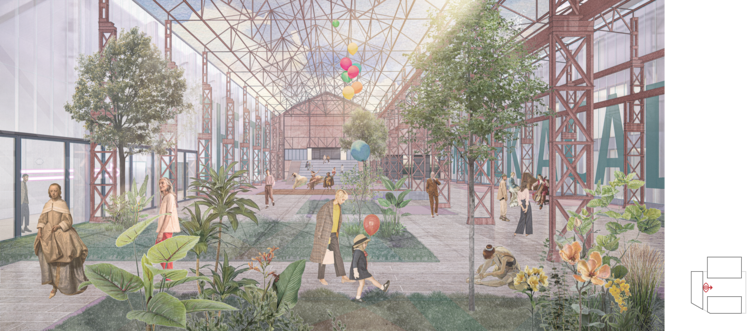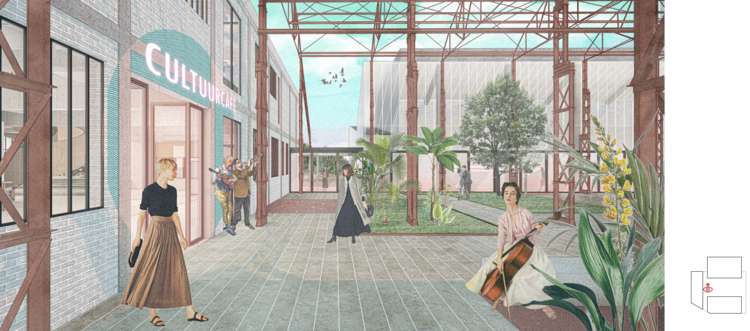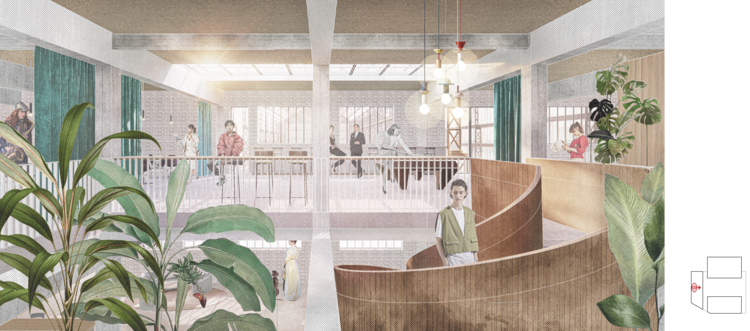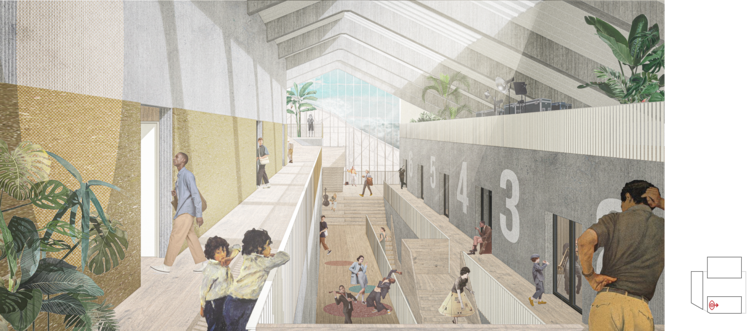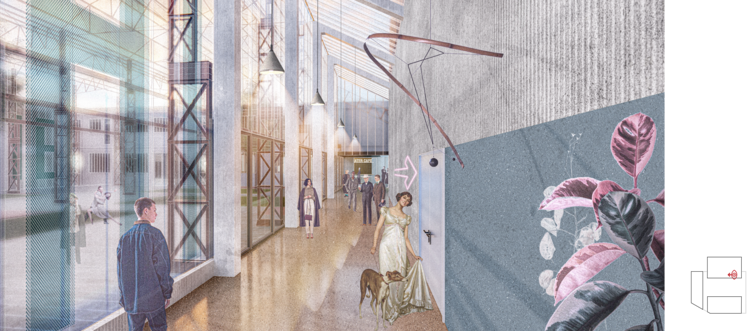Cultural Centre Boom
Pachterslei
Boom
Belgium
Between the Rupel river and the town centre a new neighbourhood is set to transform the image of Boom, which was once known as a brick-manufacturing powerhouse. Surrounded by both old and new housing and set within extensive greenery a cultural centre is planned on a disused industrial plot. Whereas the competition brief suggests a tabula rasa, POLO Labs seeks to reuse some of the utilitarian structures to ground this new cultural hub into its specific locale.
Undress to impress
We transform the large central warehouse on site into the functional and symbolic heart of the new complex. We distill this building into its essence, putting the spotlight on its most characteristic elements: the filigree-like metal structure and the front façade. A relatively anonymous industrial structure becomes an image-defining component in the new design through the removal of unnecessary elements.
By stripping the building of its roof cover we transform it into a central open square for the benefit of the surrounding facilities. It can be used as an event space, with the added possibility of it being closed off to the general public — the gates in the existing façade are there to control access and secure the compound if needed. Perforations are drilled into the concrete floor slab in order to create planters — the resulting debris is mixed into the soil to serve as substrate for the trees and flowers to be planted here, reducing the need to dispose of this rubble elsewhere.
The conserved façade with its asymmetrical roof profile forms the eye-catching entrance to the central square. On the three other sides of this open space we organise the main constituents of the building programme. These adopt a box-in-box principle: functions are accommodated in insulated and climate-controlled volumes which are placed within a bigger enclosure without climate control, containing mainly circulation and communal spaces. This radical approach allows for substantial cost-savings in both investment and running costs.
A minimalism of means
After entering the complex through the retained façade, we face another existing building within which the culture cafe and collective facilities are housed. This structure is restored and upgraded to be rain- and windproof — but we refrain from adding an insulation layer to the entire concrete skeleton. Some slabs are perforated so as to let light penetrate deeper into the volume and increase spatial communication between the different levels. New concrete boxes are placed within this building envelope to accommodate offices and facilities like kitchen, toilets etc. The interstitial space between these volumes remains without heating or air-conditioning; here we find the cafe itself plus waiting and circulation spaces for the adjacent volumes. As such this building serves as a kind of central distribution space within the compound.
The academy to the south of the central square follows the same box-in-box strategy, with the difference that the enclosing box is a new volume clad in polycarbonate panels. The polycarbonate façade material is not only economical, it also bathes the interstitial spaces in filtered daylight. At night the building glows like a lantern, with activities and people subtly visible as blurred silhouettes behind its translucent veil.
The performance hall on the opposite side of the square follows the same principle, with the main hall itself housed within a climate-controlled and acoustically separate concrete volume. Spaces for performers and public are sandwiched between this volume and the outer polycarbonate skin.
Renovation of the existing structures aims to retain the acquired patina instead of bringing them back to a supposed original state. This imbues the spaces with a somewhat raw character, an ambience which is nicely complemented by the use of industrial materials like polycarbonate and in-situ concrete. Within this palette of “hard” materials, comfort is increased through the insertion of timber elements such as floor finishes and fixed furniture.







